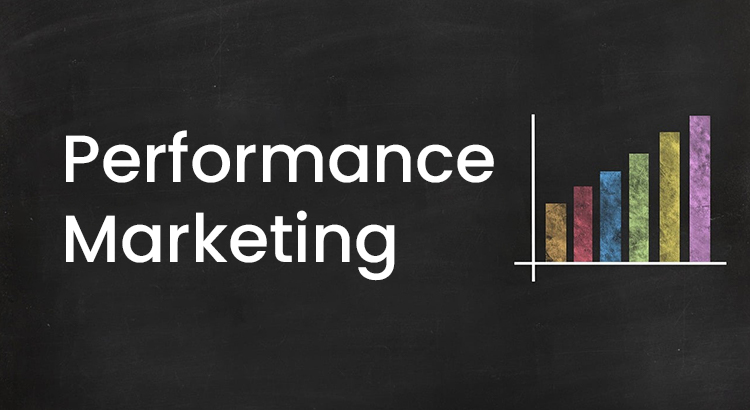Performance marketing is a dynamic approach to advertising that focuses on measurable results, enabling businesses to optimize campaigns for maximum efficiency. This article explores the definition, benefits, channels, strategy, and tools associated with performance marketing.
Performance Marketing Definition
Performance marketing is a data-driven strategy where advertisers pay based on the performance of their campaigns. Unlike traditional methods, performance marketing allows businesses to track and measure their return on investment (ROI) more accurately.
Benefits of Performance Marketing
1. High ROI
Performance marketing delivers superior returns on investment by targeting specific demographics, ensuring resources are efficiently allocated for optimal results.
2. Low-Risk
Paying for actual outcomes minimizes financial risks, offering a cost-effective advertising model with measurable performance metrics.
3. Easy to Track
Utilize advanced analytics to monitor campaigns in real-time, enabling data-driven decision-making for continuous optimization and improved efficiency.
4. Flexible
Adapt strategies promptly based on campaign insights, allowing for quick adjustments to changing market conditions or audience preferences.
5. Increased Brand Awareness
Targeted campaigns enhance brand awareness, recognition, and recall, fostering a stronger connection with the target audience.
Performance Marketing Channels
1. Social Media Marketing
Utilize platforms like Facebook and Instagram to connect with target audiences. Leverage targeted ads, engaging content, and community building to enhance brand visibility and engagement.
2. Search Engine Optimization (SEO)
Optimize website content to improve search engine rankings. Enhance organic visibility and attract quality traffic through strategic keyword placement and site structure improvements.
3. Email Marketing
Send personalized messages to target audiences, nurturing leads, and driving conversions through well-crafted email campaigns. Utilize segmentation and automation for effective communication.
4. Paid Advertising
Boost immediate visibility through channels like Google Ads. Pay for ads targeting specific audiences, maximizing exposure and ensuring a measurable return on investment.
5. Video Marketing
Capture attention with compelling visual content on platforms like YouTube. Enhance engagement and convey messages effectively through storytelling, product demonstrations, and brand storytelling.
Related Article: Video Marketing Strategy: A Deep Dive into Proven Tactics
6. Referral Marketing
Cultivate a network of brand advocates by incentivizing customers to refer others. Leverage word-of-mouth marketing to expand customer acquisition and foster a community around your brand.
7. Content Marketing
Develop content that are valuable and relevant to attract and engage target audiences. Establish authority, build trust, and drive conversions through informative blog posts, articles, and multimedia content across various platforms.
Useful Article: Content Marketing: Strategies and Benefits
Performance Marketing Strategy
1. Decide on Your Campaign Message
Define a clear and compelling message that aligns with your brand and resonates with your target audience. Establish the core theme or value proposition that your campaign will communicate effectively.
2. Plan Your Brand Positioning
Strategize how your campaign will reinforce your brand identity, values, and unique selling points. Ensure consistent messaging across all channels to build a cohesive and recognizable brand image.
3. Create Performance Targets
Set specific, measurable, and achievable goals for your campaign. Define key performance indicators (KPIs) that align with your overall marketing objectives, allowing for accurate assessment of campaign success.
4. Know Your Channel Mix
Choose channels based on your target audience and campaign objectives. Tailor your strategy to leverage the strengths of each channel, creating a cohesive and integrated marketing approach that maximizes reach and impact.
5. Get Your Website Ready
Ensure your website is user-friendly, visually appealing, and aligned with the campaign’s objectives. Optimize landing pages, calls-to-action, and user journeys to facilitate seamless interaction and conversion.
Useful Article: How to Create a Website: Step-By-Step Guide
6. Create and Launch the Campaign
Develop and implement the campaign across chosen channels, ensuring consistency in messaging and design. Execute a well-timed launch to maximize impact and engagement among your target audience.
7. Measure and Optimize Along the Way
Continuously monitor campaign performance using analytics tools. Analyze data to identify trends, assess KPIs, and make informed adjustments to optimize results throughout the campaign duration.
Performance Marketing Tools
Google Analytics
Google Analytics tracks website performance, user behavior, and campaign effectiveness, providing valuable insights for data-driven marketing decisions.
Google Search Console
Google Search Console offers insights into website visibility on Google search results, aiding in optimization and addressing search-related issues.
Semrush
All-in-one marketing toolkit for SEO analysis, competitor research, and keyword tracking, empowering businesses to enhance online visibility and competitiveness.
HubSpot
A comprehensive CRM platform integrating marketing, sales, and customer service for streamlined processes, lead nurturing, and marketing automation.
Salesforce
Cloud-based CRM solution managing customer relationships, sales processes, and marketing campaigns to drive growth and enhance customer engagement.
Mailchimp
Mailchimp is a popular email marketing platform with features like audience segmentation, personalized content, and performance tracking, facilitating effective and targeted email campaigns.
Conclusion of Performance Marketing
Performance marketing emerges as a crucial strategy, providing businesses with measurable results and a versatile toolkit for success. Adopting this approach empowers brands to navigate the dynamic digital space effectively, achieving sustainable growth and building lasting connections with their target audience.


